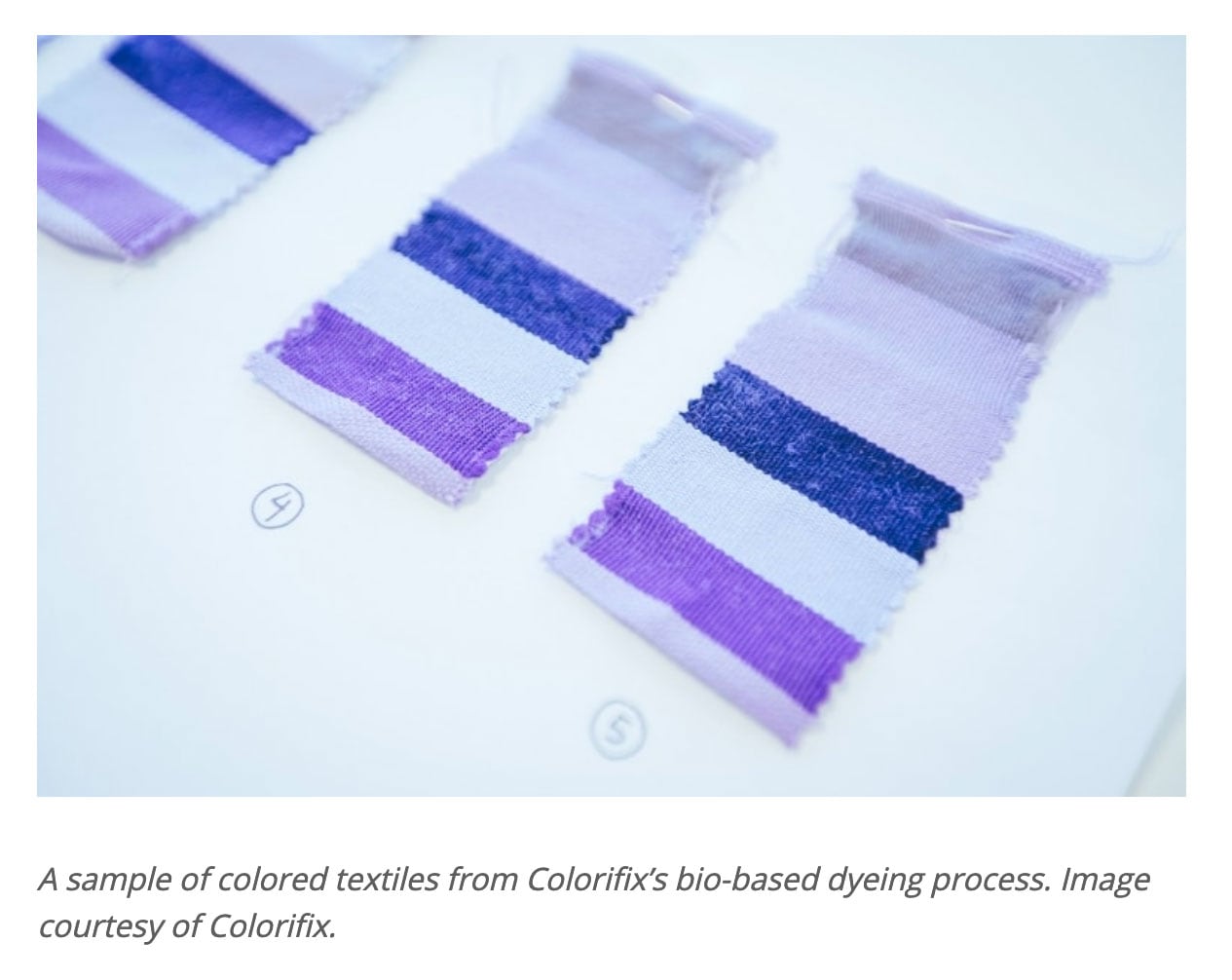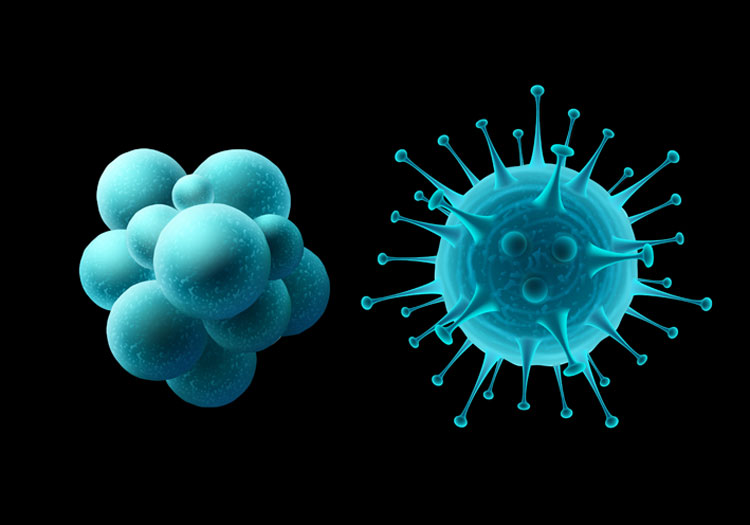There’s been a lot of press talk about ‘new bio-synthetic dyes’ for the textile industry. But much of this news is often recycled, and inaccurate. So, what’s really going on? John Mowbray gives readers an insight into the current state of play.
It’s well known that dyeing denim with indigo is a wasteful process when it comes to the use of water, energy and chemicals. The problematic use of hazardous reducing agents that are needed to make indigo soluble in water, so that it can stick (adsorb) to the cotton fibres, is also well-known.
This has been partially addressed with the introduction of pre-reduced (PR) synthetic indigo dyes from the likes of DyStar, Blue Connection and more recently, Archroma.
In addition, a company in Pakistan called Scada Industries is now making 400 tonnes of pre-reduced indigo per month – mainly for the local market. And there are some denim companies in Pakistan such as Kassim Textile Mills and Soorty that have already installed direct electrochemical technology to produce their own PR indigo on site. With this in mind, researchers have upped their game when it comes to developing new ‘bio-synthetic’ alternatives to the traditional indigo dyes sold in either the granulated powder form or as pre-reduced indigo liquid.
But is ‘bio-synthetic’ even the right word to describe some of these new developments in dyeing? And not just indigo dyeing. We’ve recently seen reports on ‘biosynthetic’ advances from the Tinctorium, Colorifix and Pili. A better description, however, could be ‘bio-generated’ rather than ‘bio-synthesised’. The innovative Earthcolors range from Archroma is a range of dyestuffs synthesised from redundant biomass, so we can correctly call that process bio-synthesis.
Whereas the dyes produced by Tinctorium or Pili, for example, are either generated by microbial or enzymatic activity on pre-existing species (biological stuff that already exists). These microbes can internally generate and excrete the dye pigment once its formed. We’ve also seen these reported elsewhere as new ‘bio-synthetic’ dyes when in reality they are pigments that have been created in the laboratory.
Yet even though the manufacture of new products in the laboratory for the coloration of textiles is – for the time being – restricted to pigments, it would be wrong to ignore the possibility that soluble indigo could also be made from biological sources such as Escherichia coli in the future.
Indigo bioformation
Recent research such as that at the University of California looks at the efficiency of the indigo bio-formation, the scalability of the process and the basic performance of the obtained pigment versus industrial standards. What it doesn’t do – at the moment – is look at the technical properties of the resultant pigment in denim production such as fixation levels on cotton fabric, fastness, shade variation, etc.
A relatively new company called Tinctorium was spun out of this research. Headed up by CEO Michelle Zhu and Tammy Hsu, chief scientific officer who was an author on the original paper along with John Dueber who was interviewed by Ecotextile News on the day the paper was published in Nature back in January 2018. Essentially, Tinctorium produces Indoxyl from Tryptophan, an amino acid that is the precursor of serotonin derived from the bacteria Escherichia Coli – a biosynthetic route that has been “known for a long time,” according to our denim correspondent Miguel Sanchez from Barcelona consultancy Gavilan AD.
“However, what makes the concept very interesting is the capacity to produce the stable leuco form (isomer) of Indigo called Indican,” he told us. This is the same stable isomer that is commercially available in synthetically made pre-reduced indigo dyes already on the market but is made instead by the scientists using enzymatic methods.
Interestingly, the resultant bio-produced Indican is said to be stable in direct contact with air, whereas PR indigo produced either electrochemically or by catalytic hydrogenation is extremely sensitive to oxidation, so that the dye needs to be handled in an inert nitrogen atmosphere. “The Indican is then altered enzymatically during the application to obtain an indigo that performs like conventional synthetic indigo,” says Sanchez, “it quickly oxidises when in contact with oxygen to give the usual and expected blue looks. It’s a very clever concept.”
At the moment, it’s perhaps still too early to talk about yields, ease of use in existing industrial applications, or speculate if hydros (sodium hydrosulphate) will be still needed during the denim dyeing process – as it is with existing synthetic indigos in granulated powder form. Then there is the issue of cost. Another timely question to raise is will aniline be obtained in any bio-generated indigo dye that may become commercially available from this process?
Mike Kininmonth, denim expert at fibre supplier Lenzing takes it a step further: “This current flush of ‘bio-synthetic’ indigo start-ups show a lot of potential promise – however none of them seem to understand the reality of the textile industry. Cost, reproducibility, scalability and practicality are barriers to entry in a low cost/low technology industry.”
Tinctorium though, has recently added denim guru Adriano Goldschmied as an advisor – although this could reinforce Kininmonth’s point in that he’s a very well-known denim brand and designer. But not a denim dyer or a textile chemist.
Funding success
As we reported back in February 2016, Pili is a French company that claims to use bacteria to produce red, yellow, orange and violet pigments, which are earmarked for use in textile dyeing and digital printing. Again, this method requires enzymes that convert different types of carbohydrates (sugars) – at different temperatures – to produce different shade ranges. Very clever.
Based at a ‘biohacking’ lab in Paris called La Paillasse, Pili researchers initially looked at a South American version of the Streptomyces bacteria that produces blue pigment under certain conditions. The idea was to produce a pigment for use in pen ink and the company originally worked on this idea with French pen maker BIC.
Such is the interest in this idea, that only last month, the biotech company picked up €3.6 million ($4M) in its latest round of funding and is now being backed by the French State itself in a bid to produce the company’s first batch of ‘high-performance biotech dyes.’“This new funding step gives us credibility and means to bring to the market Pili technology which is now developed by a team of 15 people, mainly biologists and chemists working hand in hand for the rise of a circular economy,” stated Jérémie Blache, Pili CEO and co-founder.
Yet not everyone is that impressed. “Unfortunately, the (Pili) shade range seems to be virtual at this moment in time,” noted Sanchez. “No pictures or references of dyed textiles and application methods have been published to date. And if the end products are pigments without fabric affinity, then they will have to be linked to the fibre by the conventional fibre pre-cationising or binder fixation. There are still many questions to be answered.”
Fixing colour
New entrant Colorifix, a UK biotech start up and recipient of a Fashion for Good innovation prize has looked at this issue differently. Researchers have developed a novel way to harness protein DNA to produce microorganisms with the ability to deposit and fix dyes to fabrics. It’s not just about the bio-generation of pigments. 
Basically, the company focuses on the application method of bio-colorisation, which converts the dyeing process into a fermentation reaction where organisms are cultured on sugar molasses and water. The microbes can dye at temperatures as low as 37 degrees. “Once the culture density is high enough, we syphon off some of the culture without extraction or purification (environmentally and economically unfriendly practices) and apply those, together with our transfer reagents, to the fabric for dyeing to take place,” co-founder of Colorifix, David Nugent told Ecotextile News in an earlier interview. “Overall, only food and feed grade chemicals are used in our process.”
The bio-generated colorants themselves come from natural sources. But that does not mean they are without risks. For example, carmine derived from cochineal beetles may cause strong allergic reactions. These colorants produced in the Colorifix process are then fixed to the fibre by a non-disclosed mechanism, which is the proprietary part of the process – not the bio-generation of the pigment.
Yet practical questions still remain. We obtained a photograph of a test dyed fabric from Colorifix which appears to use the standard SDC multi-fibre strip. It shows an example of a dyeing which coloured polyamide 6, 6 (nylon) blue and gave acetate a purple coloration (see image). “Interestingly enough, the illustration of the dyeing properties of a dark, reddish-blue shows that only the polyamide and the acetate are ‘dyed’ in the multifibre test fabric, similar to some selected disperse dyes,” says Sanchez, who believes that like the other two bio-tech companies, it’s still too early and not logical to talk about application conditions, fastness, fixation levels, build-ups and overall costs just yet.
We asked Colorifix for comment on the dye uptake of its technology as shown in the image of the multi-fibre strip, but as we went to press, had not received a response. Due to an uptick in recent press coverage on these types of bio-coloration methods for dyeing textiles it’s easy to think that we’re entering a pivotal moment in the fashion industry, where bio-based, sustainable alternatives will indeed become ‘the new vogue.’
Yet the solid research on the actual commercial and pilot-scale application of this new technology is still not there. Not by a long way. And it’s a surprise that some of the most innovative new developments on bio-generation of coloration are coming largely from tiny start-ups – and not the established dyestuff makers.
It’s a view shared by Sanchez, with 30 years of experience in this field: “I do share the enthusiasm for seeing new start-up companies working in a field that has become abandoned by the majority of large textile chemical companies,” he concluded. “It’s innovation on textile dyeing from a totally new perspective.”

